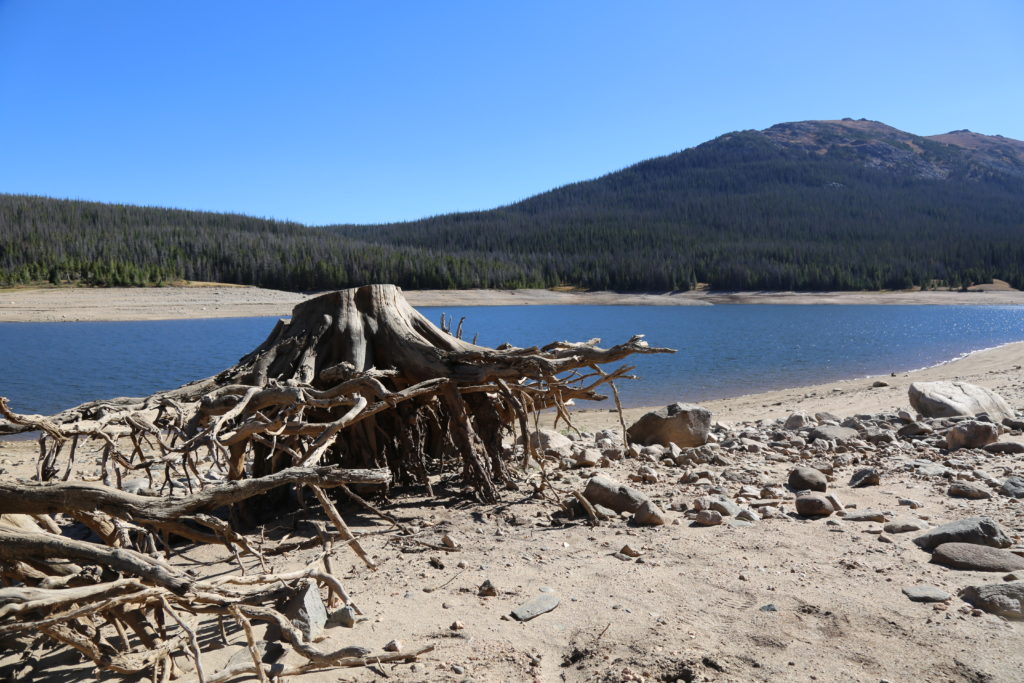Scuba Diving Above the Tables: Long Draw Reservoir
Extended range altitude diving is an adventure I hadn't checked off my bucket list. Until today.
Altitude Diving
When driving in the mountains, you may have noticed your ears popping as you ascend or descend. The need to equalize the pressure in your ears stems from the change in atmospheric pressure at varying altitudes. The pressure at sea level is approximately 14.7 pounds per square inch (psi). A change in altitude will demonstrate the atmospheric pressure at 5,280' (one mile) is actually closer to 12 psi. You may feel skinnier at the beach, and if you live at an altitude higher than sea level, technically you are... because your body's air spaces are more compressed with the increased atmospheric pressure, and thus, you take up less physical space. You may not however, see the change in your beach selfies. Sorry.

Long Draw Reservoir
In the northwestern part of Colorado, Long Draw Reservoir (10,109 ft) sits near the top of Cameron Pass (10,276 ft). The reservoir typically hosts a variety of fly fisherman, shore fisherman and kayakers during the summer months. The lake itself varies in depths up to 90 feet when the lake is not low in the late season. Fish species include Lake Trout, Brown Trout, and Rainbow Trout. You will not find bait hooks in this reservoir as live bait is prohibited at Long Draw Reservoir.
Extended Range Risks
The lack of oxygen at altitude offers a bit of complexity to the human body, including a higher risk for mountain sickness. The lake itself is fairly isolated, roughly 2 hours from any major hospital, with an altitude change of one mile in atmospheric pressure in between. Typically, the wind is blowing and offers another complication with dehydration. Both risks must be managed and respected before diving in these environments.
Scuba diving at altitude offers additional risks; because of the lack of atmospheric pressure, and the addition of pressure with depth of water. Recreational diving limits are set at 10,000' due to the additional risks associated with the pressure calculations. Some dive computers also do not offer proper feedback with altitude pressure changes, as they are not designed to deal with the extrapolations of calculations past recreational diving limits. Without an understanding these changes (by doing a little math and education), the risks can outweigh the benefit of diving somewhere above the tables "just because".
Depth limits, nitrogen exposure times, ascent rates, and safety stop limits should be respected. Buddy checks, equipment checks, first aid and oxygen, hydration and self awareness are each a factor when diving at altitude, especially extended range. Additionally, this lake is a common fishing lake, with potential for line catch hazards and sharp lures, which can puncture your suit or gloves. Silt is another concern, with turbidity changing the light significantly as depth increases.
Worth the Dive
The visibility, drive, risks, weather, conditions and such were not prime during our end-of-summer dive. However, it's not everywhere on earth can you dive above the tables, enjoy the freedom of serenity with the smell of pine in your nostrils, see a moose, a chipmunk, fish, and incredible mountain views on your dive. And just how far up a mountain do you need to go before that bag of chips pops open on your drive, and scares the wits out of you?
Go Diving. See Cool Stuff.
And, dive responsibly.
